The Beers N Noodles Adventure Ends On Mt Lushan
Friday, August 28, 2009
 Mount Lushan, Jiangxi, China
Mount Lushan, Jiangxi, China
Hey Hey and a Big G'Day toya,
You are there and I am here.
You’ve probably been sitting there for some time but I just arrived here.
What a journey it was, nearly twenty hours sitting in a hard seat on a packed train.
I left Jiujiang City last night at 10:30pm and thought my train would take me on my normal adventure towards Xian city through Louyang city and past Hua Shan mountain and then to Xian where I would have to spend the night before catching a bus tomorrow into the Qing Mountains to my little city. Today though nothing looked normal and I soon found that the train I was on was taking me the 'back way’ to Xian city through lower Shaanxi Province and huge surprise to me we arrived at the Shanglou areas train station which is my train station.
Quickly I had to grab my pack and race for the door before the train departed.
Everyone around me was yelling ‘this not Xian, this not Xian’ and when I was trying to get off the train the conductor was stopping me and telling me the same. I then had the hard job of trying to explain that I knew it wasn’t Xian but it was where I lived. Everyone then went silent and said ‘this your home? Where is this?’ Soon after I finally unlocked my apartment door and after grabbing a cold beer from the fridge I fell on to my couch and with a sigh I flicked the top off my coldie, looked at my pack, smelt my clothes and said;
Bugger mate!
The 2009 Summer Beers and Noodles Adventure is at an end!
Although it ended quite suddenly, as tonight I was expecting to head to the Xian Youth Hostel to meet my sweet buddy Angel. There we’d slowly knock back a few too many beers over catch up chat and then wake in the morning really feeling like the adventure was at an end. I do think though that this years Summer Adventure was one of the best yet as I allowed myself more time in each place and randomly chose a wider variety of places and things to see and do.
And what a way to end such a journey!
I don’t think I could have chosen a better place to end it than laid back Lu Shan.
Sadly though I allowed others thoughts and experiences make it shorter than I would have liked.
One day on Lu Shan was not enough for me but I did get to take in many of the sites but would rather have done it at a much slower pace and kicked back for a few evenings with a beer or two in the beautiful colonial mountain village that was once a British summer retreat. For those who want to head to Lushan please forget about what everyone tells you as I wish I had of. Everyone I met told me how expensive it was in summer and the food and hotels are more than unaffordable. So I opted for a single day on Lushan and this is what I was greeted with.
You want hotel?
Yes how much?
Three to five hundred Yuan.
All the Chinese around me accepted it.
As I had a hotel in Jiujiang city I said no and continued to walk and within seconds it came down to eighty Yuan which is less than I was paying in Jiujiang City. Head off the main tourist streets and food is also just as cheap. It’s not often that I do listen to other peoples advice on a place I want to go but when I put together their advice and the little research I actually did on Lushan then I had actually thought I that I had found that one place that was out of my budget. Sadly within seconds I found that it was not only well within my budget but also well beneath places such as Shandong Province.
How to Get There & How Much?
Lushan is actually much easier to get to than I thought it would be.
Everything I read said that it was an hour away and from Jiujiang and from a travellers point of view I was expecting to be on a bus for an hour before we even got to the mountain and from there we would then have to either ascend by bus or by cable car. I met many people that paid much money for a tour bus to the mountain (100 to 200 Yuan). FORGET THIS! Head to the bus station just up from the huge round about on Xunyang Lu (not far past Mc Donald’s, bus numbers 101 through to 105 will get you there). Buses to Lu Shan buses begin at 7:50, 8:50, 9:40 and 11:40 and a one way fare is 12 or 15 Yuan (sorry I didn’t count my change). Within only ten minutes you are at the foot of the mountain and you can buy a Chinese English map onboard. The journey up the mountain is exceptionally beautiful and when you round the last corner and finally arrive at the top (around forty minutes later) you are greeted by a most wonderful sight of a bustling vibrant colonial village.
First thing is first, at the top of the mountain no one goes any further without ticket.
The bus will drop you off at the ticket office where you buy your ticket and then get back on again.
Food and What To Do and See
When we arrived I was so hungry so I said good bye to the happy family I was sitting on the bus with and ventured off to find what I hoped to be a normal priced meal. I found a wonderful little eatery that served a hug bowl of won tons for less than I have paid all summer.
They were a meaty treat and a delight to eat!
These guys weren’t your normal small won tons!
Oh no, they were like the Pal Meaty Bites of won tons (huge and full of meat).
Starvingly I woofed them down..get it, woofed them down! Pal Meaty Bites...oh forget it!
Being the type of scatterbrained traveller that I am I decided not to purchase a map and as I had left my LP at home to allow extra space for water storage I opted for a day of random here’s and there’s and if I made it back in time for the bus then so be it. If I didn’t then I would grab an eighty Yuan hotel room and grab another train ticket home the following day. Hey, I was well under budget as I thought I’d be paying for both Luo Wei and I for the summer. In the end my random walking covered most of what is in the LP and I by far covered more than the family from the mornings bus ride as we caught up several times throughout the day and each time they asked where I had been and what I had seen.
Later in the afternoon I found they had opted to buy the ‘What ever it is Mini-Bus Ticket’ that allows you to catch small brown mini buses. From what I could gather you can buy a special pass and it allows you to board these buses at will but I have no idea of what the cost is as I thought they were full of tour groups that had hired a bus for the day until I asked the ‘family’ how they got to and from places as they always seemed so dry and relaxed.
They pointed to the little brown buses.
And I kind of went…Oh!
Ok then!
Corrugated iron roofs were abundant and came in several rural colours that at a glance took me back to my childhood growing up in rural Victoria. Though I lived in a town many of my friends lived on farms and were raised in a typical farmhouse beneath a coloured corrugated iron roof. It has been years since I have walked amongst such a setting and it felt so strange to see Chinese people walking in and out of the doorways beneath such roofs but what was even stranger was around lunch time to see Chinese people sitting on the porches or front steps eating bowls of noodles or rice.
I felt like screaming WHERE AM I?
Where’s Macka, or Tacka, or Shaaza or even Bazza.
Where’s the bbq, the cold beer and the greyhound dogs yapping in the backyard.
By nearly five in the afternoon I was so lost that I couldn’t find myself on any of the large maps that are posted around the mountain. It really didn’t help that none of them were in English which I found rather strange. Lushan is supposed to be one of THE tourist mountains here in China yet there is a huge lack of English all over the mountain. Don’t get me wrong, there is some English but for the ticket price and it’s given ‘tourist name’ I was very taken back with the lack of English especially when I compare it to Jigong Shan which I visited last summer.
Like Lushan, Jigong Shan is full of colonial buildings from yesteryear but there is so much English on Jigongshan and it even comes complete with English speaking guides during summer, who of course are students wanting to gain work experience and wanting to practice their English while doing so. I spent several days with a beauty named Zhang Li and we still talk on QQ and over the phone every few weeks and I was so close to visiting her on my way home as I passed through Xinyang but sadly she had to head back to her family village the following day.
After visiting both mountains and finding pretty much the same thing on both if I was to choose to return to one (with a time limit) I would choose Jigongshan which can be found at the very bottom of Henan Province. I found the mountain to be much more beautiful and things were much easier to reach. Of course I did only spend one day on Lushan and it is much bigger in comparison so when I think about it I really shouldn’t compare them as it’s not fair for anyone reading this who wants to visit Lushan.
These are my three days upon Jigongshan
Day One
Day Two
Day Three
Lu Shan Mountain
Lushan is ninety five miles north of Nanchang city (the capital of Jiangxi Province) and it is at the center of an area covering many scenic spots in the middle and lower reaches of the Yangzi River. Lushan has been praised for centuries for its natural beauty. Far back in the Han Dynasty (306 B.C.-330 A.D.), China's great historian, Sima Qian, wrote in his classic, "The Historical Records": “I mounted Lushan in the south and examined how Yu the Great had dredged the nine streams.” It has inspired many poets and scholars of past dynasties to compose literary works.
The Great Hang Yang Peak, the highest peak of the mountain, is 1,474 meters high
The scenery in the Lushan tourist area is breathtaking, and historical relics are abundant. Up in the mountains are towering peaks, steep gorges, overhanging cliffs and cascading waterfalls. Due to the surrounding mountains, thick forests, rivers and lakes, Lushan has long spring and cool summers, which make it a celebrated summer resort. At the foot of Lushan Mountain lies the biggest freshwater lake in China, Poyang Lake, Shizhongshan Hill and the ancient city of Jiujiang, all of which possess their own unique charms.
Lushan is not only well known for its beautiful scenery with sheer peaks, clouds and fogs, and deep valleys, but also quite famous for its cultural relics and long history. As described by World Heritage Committee, "Mount Lushan, in Jiangxi, is one of the spiritual centers of Chinese civilization. Buddhist and Taoist temples, along with landmarks of Confucianism, where the most eminent masters taught, blend effortlessly into a strikingly beautiful landscape which has inspired countless artists who developed the aesthetic approach to nature found in Chinese culture."
It owes its reputation to its wonderful, elegant, steep and spectacular features that embrace ravines, waterfalls, grottoes, rocks and rivulets. There are twelve main scenic areas, together with thirty seven attractions, over nine hundred cliff inscriptions, and over three hundred steles. The major spots include Wulao Feng, Sandie Spring, Lulin Lake, Flower Path, Ruqin Lake, Jinxiu Valley, Xianren Dong and Donglin Temple, etc.
For those wanting to know more about what to see continue to scroll down below the photos.
So my friends, this is it, the end of the 2009 Summer Beers N Noodles Adventure!
Beers N Noodles toya…..shane
_____________________________________________________________________________
The soundtrack to this entry was by none other than the great Neil Diamond.
The album was ‘Hot August Night’.
I believe it to be the greatest travel album ever written.
It was never intended as a travel album but it is perfect for any long distance journey!
_____________________________________________________________________________
Wulao Peak,
Is 1,436 meters (about 4,711feet) above sea level, is located in the southeast of Lushan. Its five parallel peaks once formed a single apex and standing on the top you will be rewarded with a magnificent view of the distant mountains, trees, lakes, and a seemingly endless sky.
Sandie Spring
Lies below Wulao Peak. It drops through three craggy tiers with a fall of 155 meters (about 509 feet). The upper part is like snow falling down to the pond; the middle reach wanders and twists with splashing sprays dancing in the air; while the lower level resembles a jade dragon running in the pond. This is considered to be the best of the Lushan waterfalls. It is said that you are not a true visitor here if you miss Sandie Spring. However, it was not discovered until the Southern Song Dynasty (1127 - 1279) due to its hidden position in a deep gully.
Gu Ridge
Located in the center of Lushan, is 1,164 meters (about 3,819 feet) above sea level with mountains on three sides and the valley on the other. The original name of Gu Ridge was Guniu Ridge, as it looks like a bull. Gu Ridge Street is 1,167 meters (about 3,829 feet) long and it has a variety of shops, hotels, restaurants, bookshops, bars, coffee houses and dance halls that together form a town high in the sky. The Center Park in Gu Ridge was built in 1954. After several reconstructions it now covers 10,000 square meters (about 11,960 square yards). In the park there is a large half moon shaped parterre in which stands a great stone bull that is the symbol of Gu Ridge. He is two meters (about seven feet) in height and four meters (about 13 feet) in length. The base of the bull bears character "Gu Ridge." Meandering pathways, fragrant flowers, flourishing trees and a pavilion all add to lively atmosphere of this delightful place.
Historic relics
Mt. Lushan abounds in historic and cultural relics. The great historian of the Han Dynasty (206 B.C. - 220 A.D.), Sima Qian, once climbed Mt. Lushan, and wrote about it in his classic "The Records of the Great Historian." Some two hundred historic buildings are scattered over the Lushan National Park.
White Deer Cave Academy
The White Deer Cave Academy (Bailudong Shuyuan) at the foot of Wulao Peak was established in 940 but fell into disuse; it was revived towards the end of the Song Dynasty (late 12th century) by Zhu Xi, who made it a renowned centre for academic research. It attracted many additional structures up to the 19th century and is a Complex of temples, study halls, and libraries. White Deer Cave Academy was the most famous of the four biggest academies in ancient China, and enjoys high prestige in the Chinese history of education.
Donglin Temple (East Grove Temple)
The Donglin Temple (East Grove Temple), built by eminent monks in the Eastern Jin Dynasty, was the birthplace of the Jintu (Pure Earth) Sect of Buddhism. More than 1,500 noted figures in history visited this Mountain, leaving behind some 4,000 pieces of verse and over 900 inscriptions on the cliffs, as well as other writings, prints and calligraphic works. There are about 600 villas here, with the styles of 18 nations and cultures.
East Grove Temple
The most celebrated is the East Grove Temple complex at the foot of Xianglu Peak, to the west of Lushan. Begun in 386, this ensemble was added to progressively over the centuries. The group of prayer halls is important for the study of Buddhism in China and relationships between China and Japan. It is considered to be the earliest garden temple in China.
Guan Ying Bridge
Other important structures are the stone single-span Guan Ying Bridge of 1015, with its seven parallel arches, the tomb of Jin Dynasty poet Tao Qian (427), the massive granite revetment on Lake Poyanghu known as the Zi Yang Bank (1102), a group of ornate imperial pavilions of the Ming Dynasty (1368 - 1644) and the remarkable Tower of Chan Master Gong Qian, consisting of tablet pavilion, scripture pillar, and stone tower in a single structure (1618).
Cultural Heritage
According to legend, Dayu (the Great Yu), who conquered devastating floods in primeval times, visited Mt. Lushan. Qin Shihuang, the First Emperor of Qin (221 B.C. - 206 B.C.) also visited the mountain when he toured the south. Poets and scholars of every dynasty were attracted to Mt. Lushan and inspired to compose numerous works. Among them were Tao Qian of the Jin Dynasty (1115 - 1234), Li Bai and Bai Juyi of the Tang Dynasty (618 - 907), Su Shi, Zhou Dunyi, Zhu Xi and Li Shizhen of the Song Dynasty (960 - 1279), and Xu Xiake of the Ming Dynasty (1368 - 1644).
Natural Heritage
Ice-klin of Lulin - quaternary glacial remains
Mt. Lushan features geological structures of every period except the Triassic Period. It has unique evidence of glaciation during the Quaternary Period and is the birthplace of China's glaciological theory.
Though complicated, the geological structure can be clearly traced. Mt. Lushan is a Fault Mountain formed in the Quaternary Period. When it rose, the surrounding land sank, and the Poyang Basin eventually developed into the Lake Poyanghu. The many grotesque rocks, towering peaks and cascading waterfalls constitute a spectacular Mountain landscape. With frequent fog and mist, Mt. Lushan has cool summers. It also has typical flora and fauna.
Flora
Lushan has an abundance of flora. There are about 1,720 varieties, including plants of temperate zone, torrid zone, semitropics, East Asia, North America and China. Lushan belongs to subtropical area where the climate is moderate with ample rainfall. The average temperature in July is only 22.6C (about 72.7F). The Lushan Arboretum was built in 1934, and it is an important base for preserving flora of the middle and lower reaches of the Yangtze River. It is a good summer resort.
Villas & Colonial Architecture
The modern villas are quite a sight on Mt. Lushan. Each villa is an individual building complex with unique style and structure, including styles of Rome- and Gothic- churches, Japanese building and Islamic Mosque. The architects tended to build the villas in shady places, and pursued a natural and casual style. It is this style that enables the villas to be well integrated with the natural scenery. The modern villas on Mt. Lushan, mostly one or two-storeyed, though in clusters, are less densely located and decorated with trees all around, which is a pleasing picture to the eye. The villa complex is simple and natural in style. Each is like a distinctive geometric figure.
You could hardly find two villas that resemble each other.
The all-embracing spirit of Lushan means that it has various styles of architecture ranging from Romanesque and Gothic cathedrals to Byzantine structures, Japanese buildings, Islamic mosques and villas of 25 countries, all of which make Lushan a large-scale World Village.
Religious centers
Five different religions have been observed in Lushan over the past 1,600 years. The monk Hui Yuan (334 - 416) of the Eastern Jin Dynasty (317 - 420) established Donglin Temple in Lushan, which is the Pure-land Sect of Buddhism. In the 5th century, Lu Xiujing, a Taoist of the Southern Dynasties (420 - 589) initiated Nantianshi Sect of Taoism. During the Ming (1368 - 1644) and Qing (1644 - 1911) dynasties, Islam and Christianity became established here. In the early part of the 20th century, churches of 20 more counties were constructed in the area which still has temples and churches of the five religions (sects).
Other Entries

 Mount Lushan, Jiangxi, China
Mount Lushan, Jiangxi, China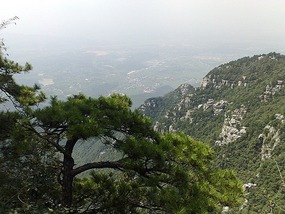
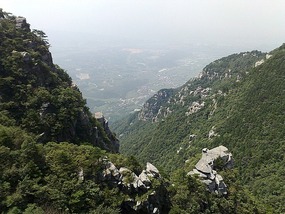
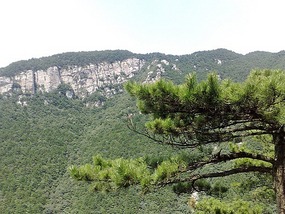
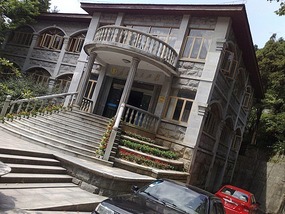
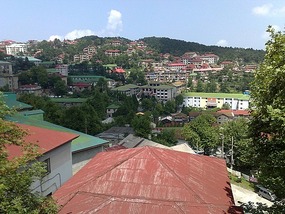
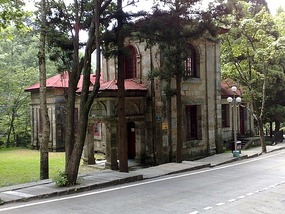
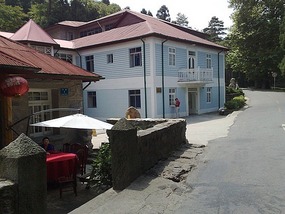
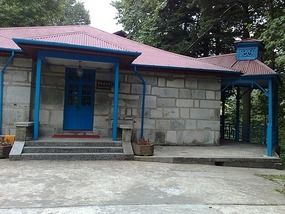

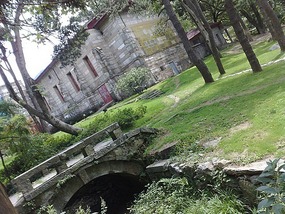
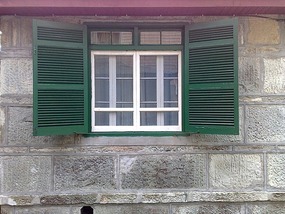

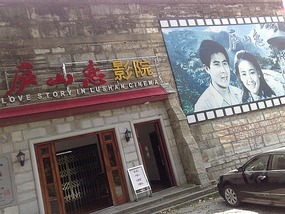
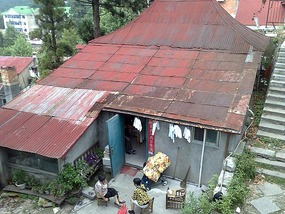

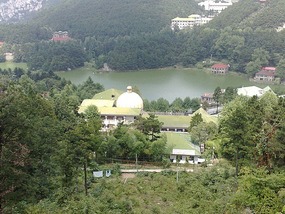
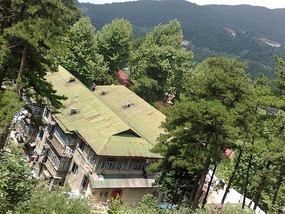
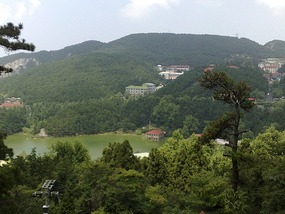
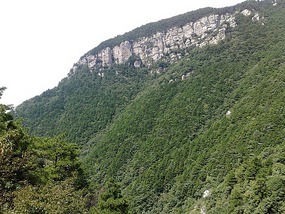
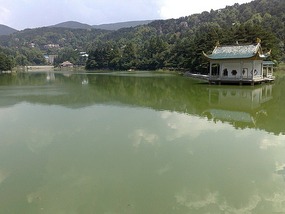
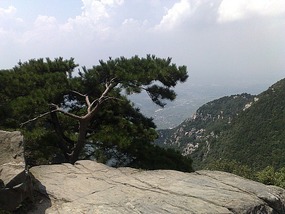
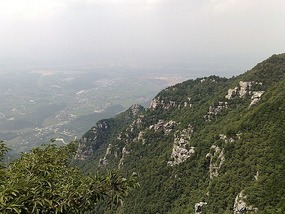
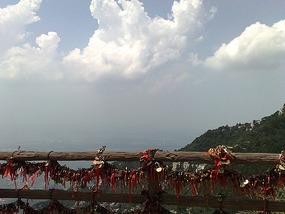
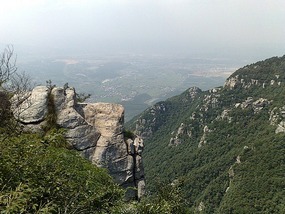
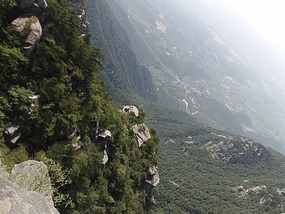
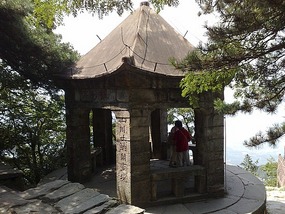
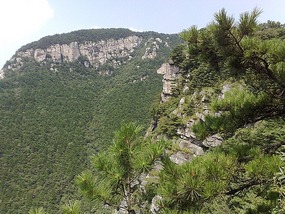
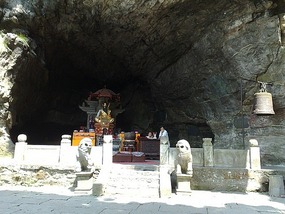
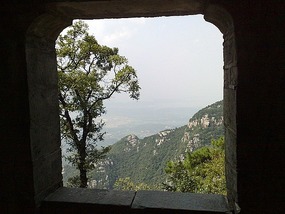
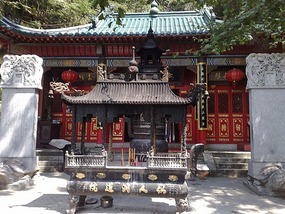
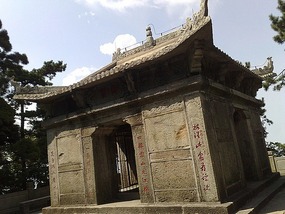
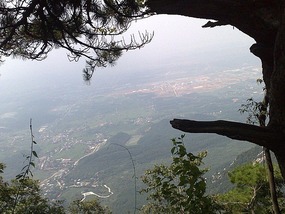
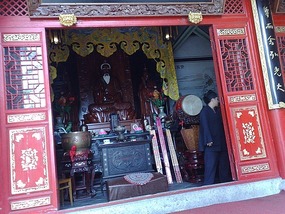
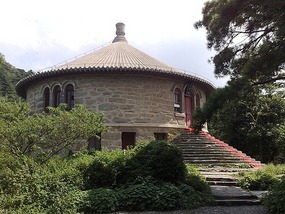
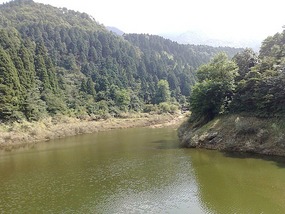
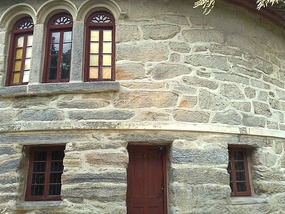
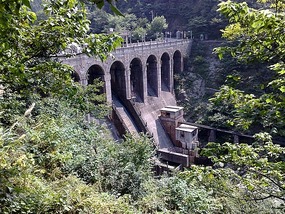
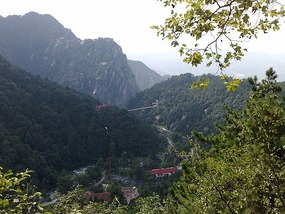
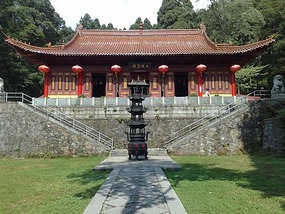


2025-05-22